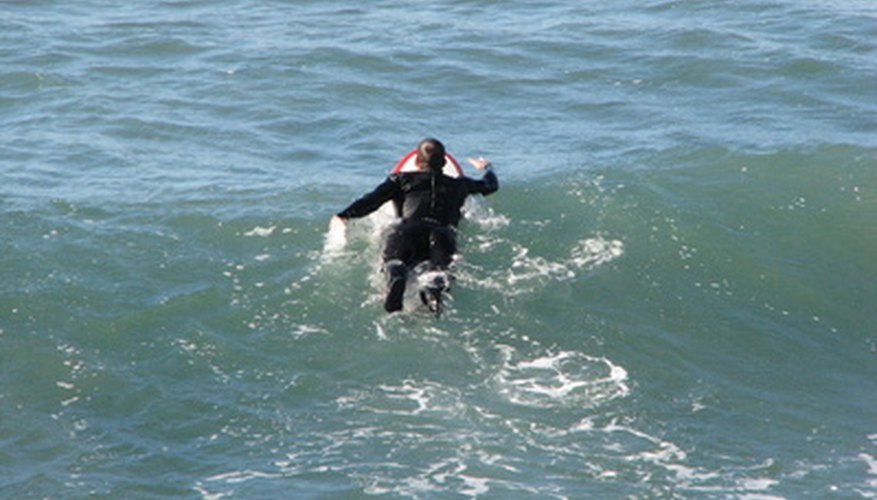A wetsuit's colour is largely dependent on its intended use and the thickness of its fabric. According to Surfbrand, the most common wetsuit colours (yellow and black) are very unappealing to sharks, which make them ideal for scuba divers in waters with high shark populations. To change the colour of a wetsuit, you will have to buy the right colour of neoprene cement, a popular glue that both changes the colour and retains the elasticity of wetsuit fabric.
Determine the thickness of your wetsuit. If your wetsuit is designed for tropical climates, it will be thin, meaning the fabric has a thickness of 1.5 to 3 millimetres. These wetsuits cannot be dyed after manufacturing, which means that a wearer who wants a different colour will have to buy a new suit (Fibersource). However, cold-water wetsuits, which have a thickness of 5 to 7 mm, can safely absorb neoprene cement dyes. Thus, if you have a cold-water wetsuit, you can change its colour manually (Aquaflite).
- A wetsuit's colour is largely dependent on its intended use and the thickness of its fabric.
- Thus, if you have a cold-water wetsuit, you can change its colour manually (Aquaflite).
Buy the appropriate colour of neoprene cement. Neoprene is usually sold in either black or yellow, though you also can find variants in royal blue, lime and violet. To make a contrasting design, purchase two colours, one light and one dark. You can find these colours at most surf or dive shops.
Spend a few minutes painting your desired pattern with a dry brush. Since neoprene dries very quickly (and is very adhesive), any mistakes you make while painting a wetsuit are very hard to reverse (AirSpeed Press). In addition, bear in mind that wetsuits are best suited to certain colour patterns; black neoprene is best suited for gluing pockets, while yellow paint is more likely to produce a single sheet of colour on flat regions, such as the chest area. Dip your brush in water and paint a few practice patterns before you open the neoprene.
- Buy the appropriate colour of neoprene cement.
- Since neoprene dries very quickly (and is very adhesive), any mistakes you make while painting a wetsuit are very hard to reverse (AirSpeed Press).
Paint the wetsuit with neoprene. Carefully dab a small amount on your brush, then run the brush over your wetsuit until it achieves the desired colour. To change colours, dip the brush in water before you dab it with your second colour, then finish your pattern.
